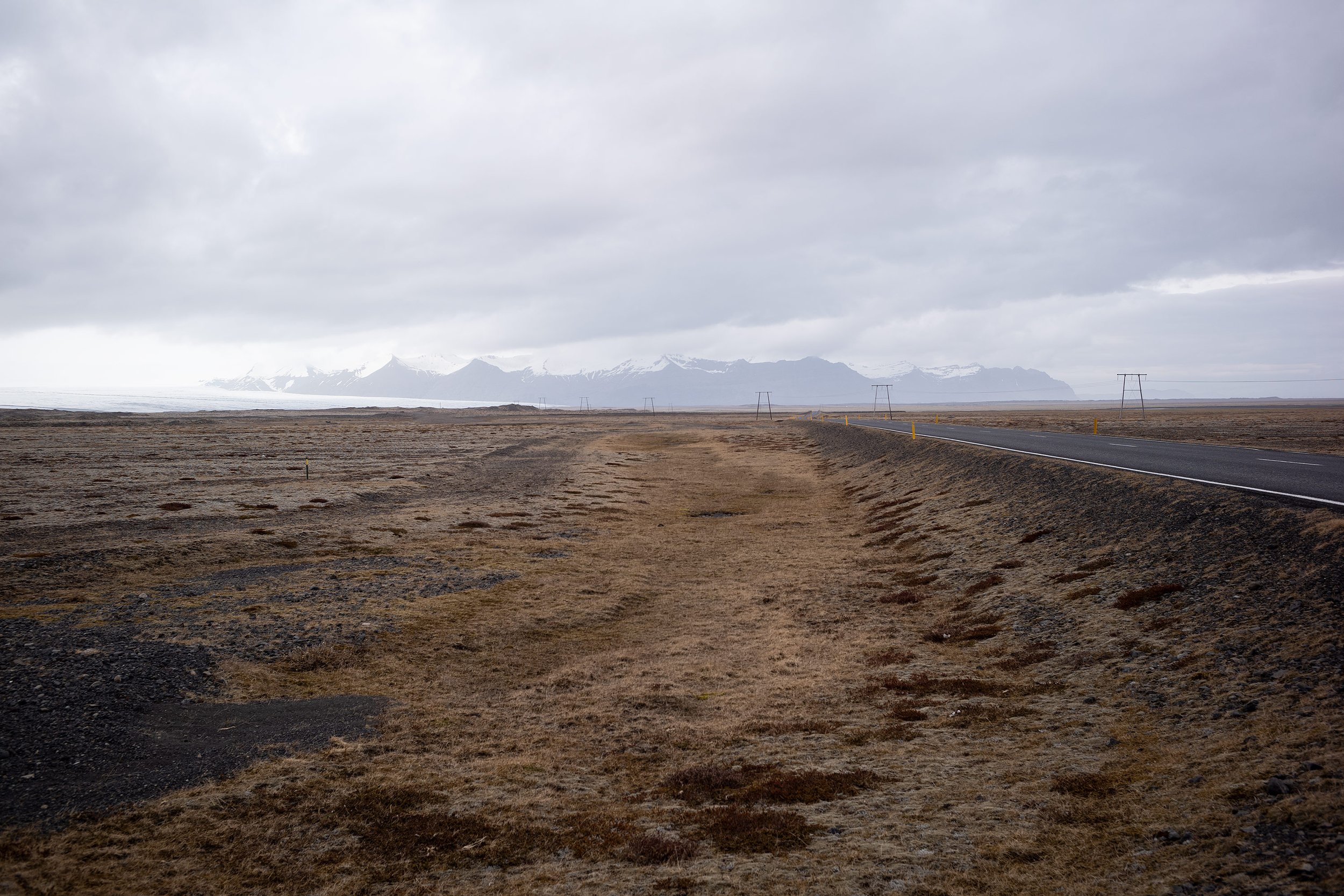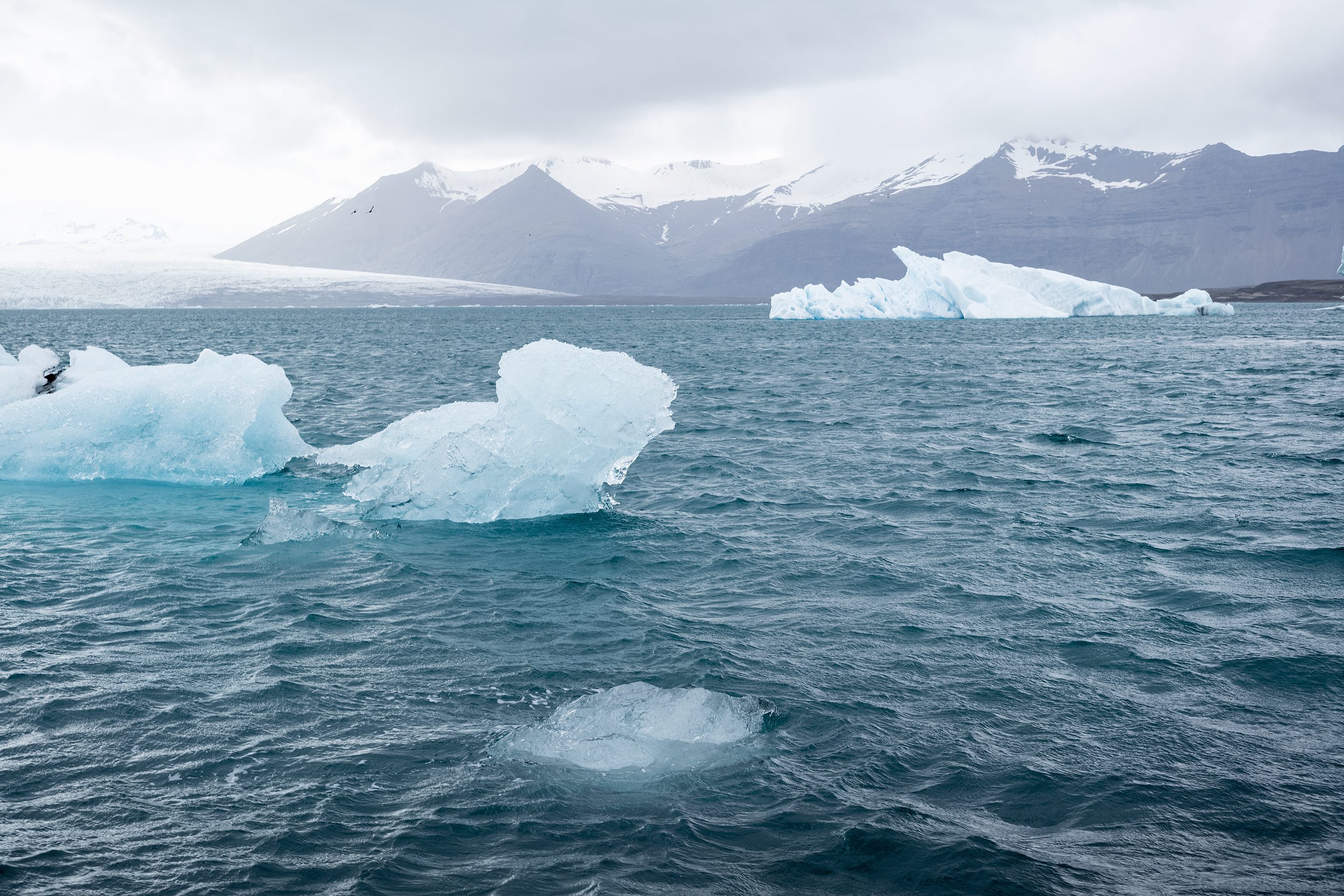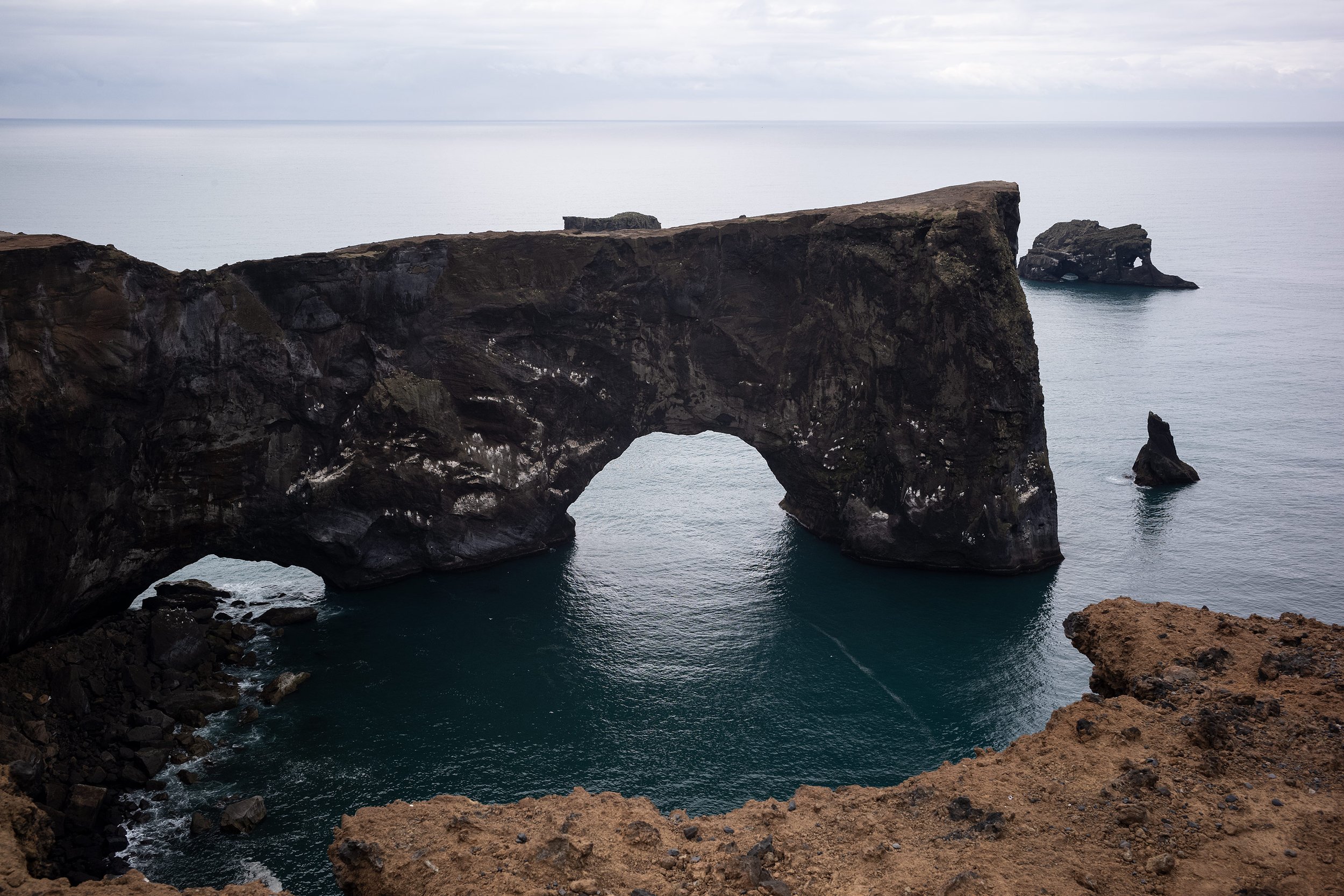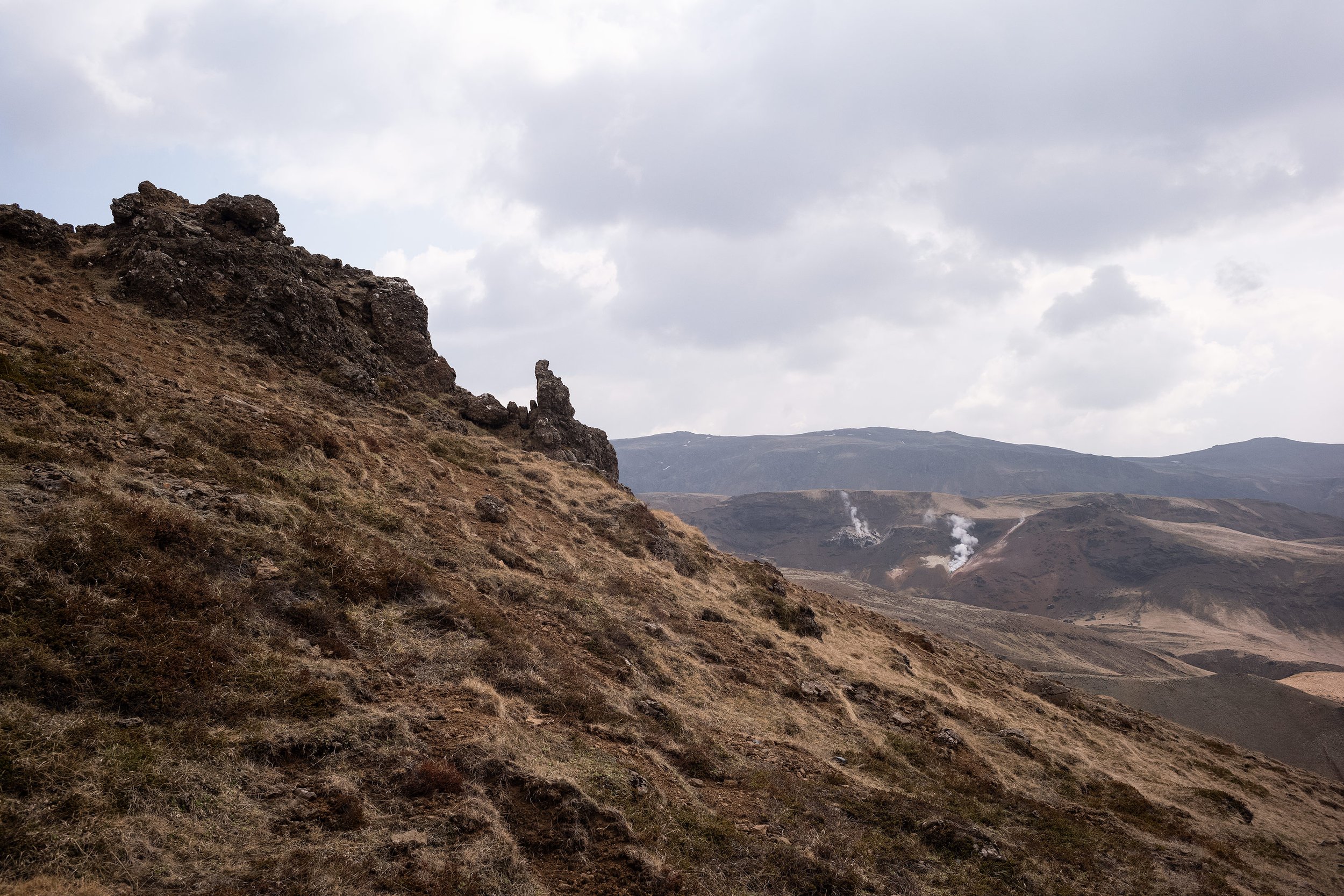
Iceland
Chapter two
Vik to Höfn.
May 17.
Morning in Vik.
I stop by the Kronan grocery store in Vik before making my way to the Eldhraun lava fields. I buy surprisingly good croissants (which lull me into believing that all of the croissants at the grocery stories in Iceland are fantastic; I’ll be proved wrong the next day) and sandwiches for the road and the rest of the day.
It’s 45 minutes to the lava fields and then another hour to the falls and glacier and then another hour and forty minutes to Höfn. I have a full schedule and dinner reservations at Pakkhus and I am excited to begin the day and for the langoustines promised at day’s end.
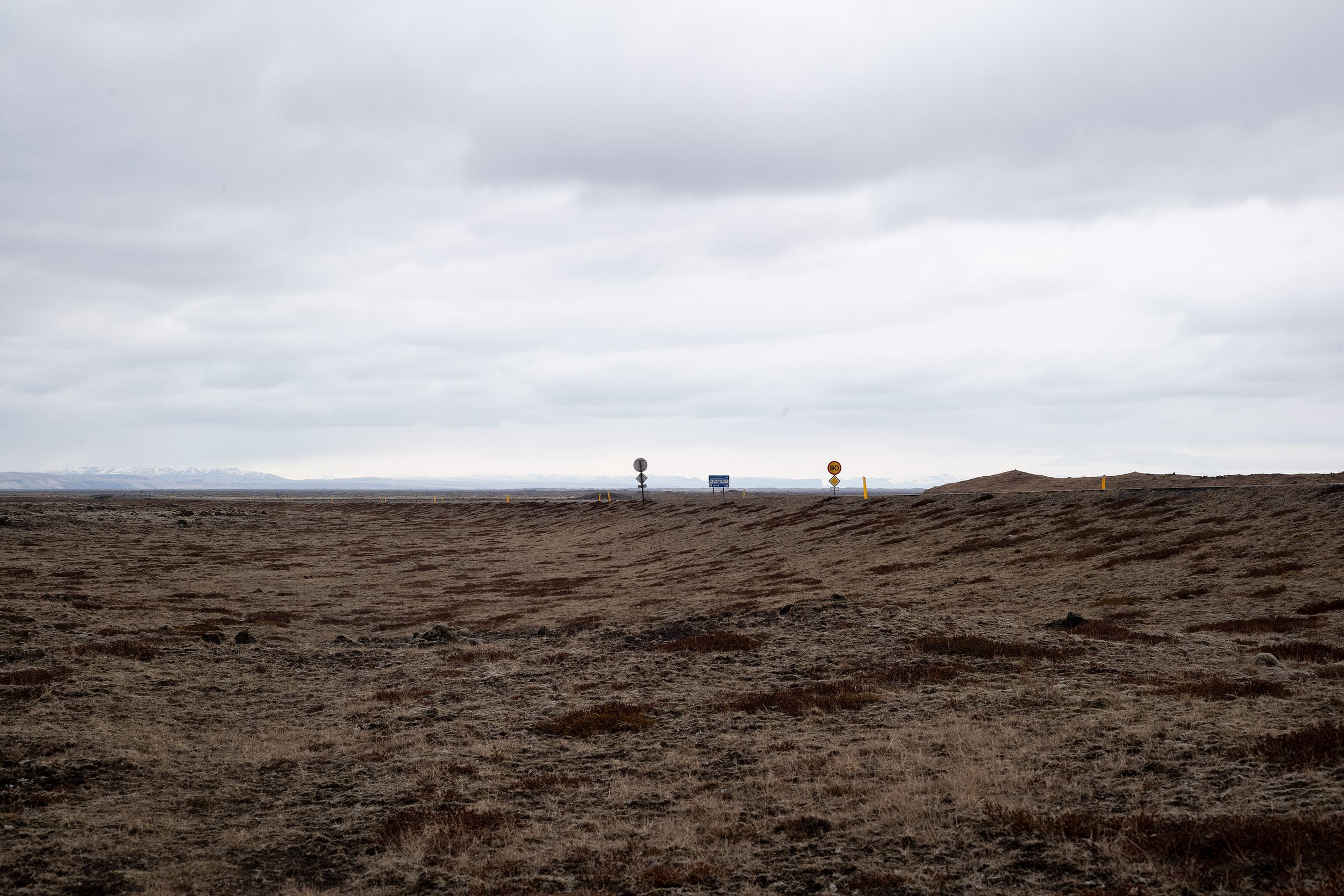
Cell service is spotty and slow and I am limited by my playlist. I had recently discovered Arooj Aftab and had it downloaded on my phone. It’s the perfect soundtrack for my drive into the unknown.
The Eldhraun Lava Field.
The lava fields surround me before I realize it; the land has become green and mossy. The fields are expansive; my eyes follow the undulating shape of the landscape to what appear to be the edges of the earth.
Formed by an eruption that occurred over the course of two years in the 1800s, the fields cover 565 square kilometers. A cataclysmic event, the eruption is considered one of the most poisonous to date and nearly forced the entire population of Iceland to evacuate due to the disease and famine that killed more than half the domestic animals on the island.
Now, it’s peaceful and calm. The fine moss that covers the fields take decades to grow, further underscoring the relative peacefulness the area now enjoys.

On the road again.
It’s been overcast and now and again the grey skies let fall a little rain. I follow the ring road as it continues east towards the edge of the country. Siri tells me to drive straight for 80 kilometers. My destination will be on the left. It’s a parking lot that services two attractions: Svartifoss, known as the “black waterfall” and the glacier at Skaftafell.
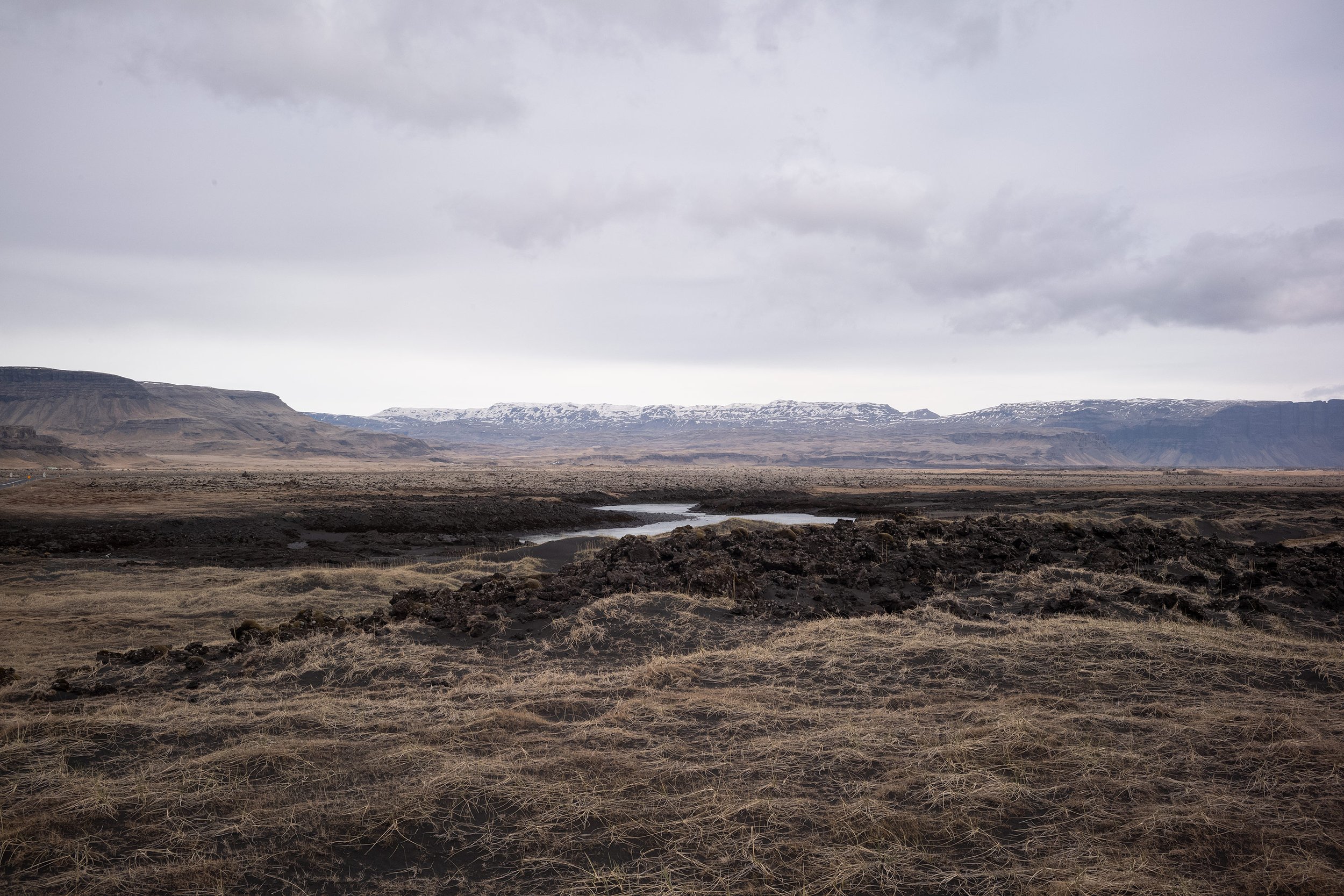
Svartifoss & Skaftafell.
At the visitor center I chat with the ranger on duty. There are few cars in the parking lot and I ask her about attendance. She tells me that in summer there’s usually over 4000 visitors a day. Today, there have been 61. Over the winter she’d go days without seeing anyone.
She’s from Reykjavik but now lives in the park, a 15 minute walk away. She likes being in nature but during the height of the summer she sometimes feels like a robot as everyone asks the same questions: Where is the waterfall? Where’s the bathroom? Where’s the glacier?
There are cards on sale and she tells me that they were drawn by a ranger who lived and worked in the park for 5 years. They’re now elsewhere, going on 20 years as a ranger. I buy a card and thank her for the chat. But before I leave, I have a question: So the glacier is this way?

The hike to the falls is about an hour on a well-groomed trail. I pass a few couples on the way there and back. A German couple tells me that they have been in Iceland for almost two weeks on a three week trip. The first week was spent in quarantine as they didn’t yet have access to vaccines.
I told them I booked the trip as soon as I had scheduled my vaccine appointments, leaving a week after my second dose. It’s my first trip out of the country in two years.
We marvel at how beautiful the country is and how well they’ve adopted Covid protocols. It’s the safest place I’ve felt since the beginning of the pandemic; the case counts are low and the testing and quarantining protocols are strict.
Svartifoss.
The falls are beautiful. The first glimpse is striking as it appears as if a chunk of earth has been ripped out to expose the basalt columns and falls. As I neared, the columns look like a frozen waterfall, the rock stepped back, suspended, and ready to fall. It’s as if they are frozen in time, echoing the action of the falls that split the canyon.
Skaftafell.
I retrace my steps back to the visitor center and take the path to the glacier. It’s become windy and cold and I wrap my scarf tightly around my neck. As I approach the glacier, I can feel the air temperature drop.
As I approach the glacier, the stream of runoff keeps me from getting closer. The water is freezing, and there are signs warning people of exposure. A life preserver hangs from a post next to warnings not to swim.
I walk along the stream looking for a place to cross, but give up after the path becomes rockier without a clear path forward.. A German couple continues after I turn back, but once I am back at the main viewpoint I see they are also on their way back towards me.
A sneak peek at Jökulsárlón.
Back on the ring road, I drive through a volcanic landscape that I have accepted as commonplace. As I drive, the space to my left becomes compressed as rocky dunes take over the side of the road. Out of the corner of my eye I see what appears to be an iceberg appear between two rocky peaks and I quickly find a place to park alongside the road.
Climbing to the top of the rocks, I see icebergs floating in an impossibly blue lagoon. It’s unexpected and unexpectedly moving. It’s late in the day and the skies threaten rain. I run back to the car to change lenses and then strike back out, climbing down the dunes to the edge of the lagoon. The sand is black and there are bits of ice scattered like diamonds on the beach.

When I reach Höfn the weather has changed. Passing the glacial lagoon I seem to have passed a point where the climate changes. The sun is shining and we seem to be headed into an extended golden hour.
I am staying just outside of the fishing village and check into my clean and modern rooms before making my way into town. The restaurant is situated right by the harbor, and fishing boats line the coast by the parking lot. My table isn’t quite ready and I am directed to a table in the ground-floor bar to wait.
When I am seated, I order a glass of wine, the langoustine soup, and then an entree of grilled langoustines in Icelandic bitter, garlic and parsley. Bread and butter is placed on the table and I tear into it with relish. I’ve only had snacks and croissants all day and I am eager for a hot meal. The wine warms my body and the food warms my soul. It’s been only two days that I’ve been in Iceland, but it already feels like forever (in the best possible way).
The days are long and full of activity, and the roads are clear and unencumbered. It’s the perfect first trip since the pandemic. I had felt so enclosed for the past two years in New York and it’s amazing to be out in the open, surrounded by nature, and far from other people. 🇮🇸



